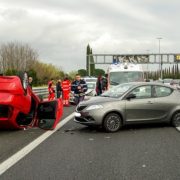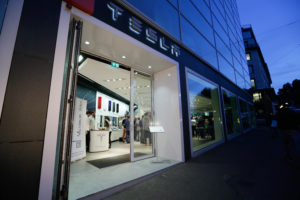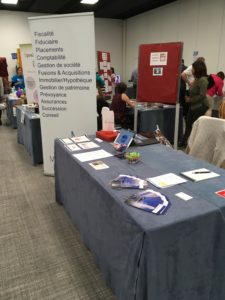Obligation to drive with the lights on during the day.
/0 Comments/in Uncategorized /by vassilikiSince the 1st January 2014, it has been mandatory to drive with the lights on during the day. This obligation applies to all motor vehicles, including two-wheelers. This law modification about road traffic is part of Via sicura, a federal road safety programme. TCS and its partners are in charge of communicating this change in legislation.
Why do we have to drive light on during the day?
Driving with the lights on during the day is an easy measure to reduce the number and severity of road accidents: with the dipped-beam or daytime running lights on, vehicles are more noticeable. This will help motorized traffic users, pedestrians and cyclists to estimate the distance and speed of an approaching vehicle. Then the risk of accidents is reduced for everyone, motorized or not.
Which vehicles are subject to this obligation?
The use of daytime running lamps or dipped-beam headlamps is mandatory for motor vehicles. Exceptions are vehicles which are not classified as motor cars or motorcycles, and motor cars and motorcycles first put into service before 1 January 1970.
Which lights should I turn on during the day?
There are two possibilities:
- Dipped-beam headlamps
- Daytime running lights
Drive with the dipped-beam headlamps
If your vehicle doesn’t have daytime running lights, you can drive with the dipped-beam headlamps. These are automatically switched on when starting or must be switched on manually.
Can I add daytime running lights to my vehicle or have my dipped-beam headlamps connected when I switched on?
Have the dipped-beam headlamps connected to the starter of the car.
It is possible to have the dipped-beam headlamps connected directly to the ignition by a specialist. Any risk of forgetting to switch them on or off disappears.
Is it true that this can contribute to increased fuel consumption?
When you drive with the dipped beam lights on, there is a small increase in consumption, about 2%. This is because when the dipped-beam headlamps are switched on, the position, rear and registration plates and dashboard are also illuminated. Depending on the type of vehicle, other interior lights are also switched on.
It’s possible to estimate that driving with the dipped-beam headlamps during the day will have a power of 140 to 200 watts. As a result, the bulbs need to be replaced a little more often. However, this surplus can be largely balanced by eco-driving.
Which lights should I turn on at night or when visibility is reduced?
In tunnels, in bad weather or at night, dipped-beam headlamps remain mandatory. Daytime running lights are too weak in this type of situation and only illuminate the front of the vehicle.
Source:http://www.tcs.ch/fr/test-securite/securite-routiere/via-sicura/feux-de-jour-
Road accident due to a worn-out wiper – does the insurance pay?
/0 Comments/in Uncategorized /by vassilikiInsurers pay 1330 francs per second
/in Uncategorized /by vassilikiOn average, nearly 1330 francs per second, this is what Swiss private insurers had to pay in 2012 for insurance cases. In total, life insurance and damage payments amounted to 42 billion francs, so 5200 francs per habitant. Premium income reached CHF 31 billion in life insurance and CHF 26 billion in property and casualty insurance. Thus nearly 7100 francs per habitant was spent in Switzerland for private insurance.
Source: Association Suisse d’Assurances ASA










